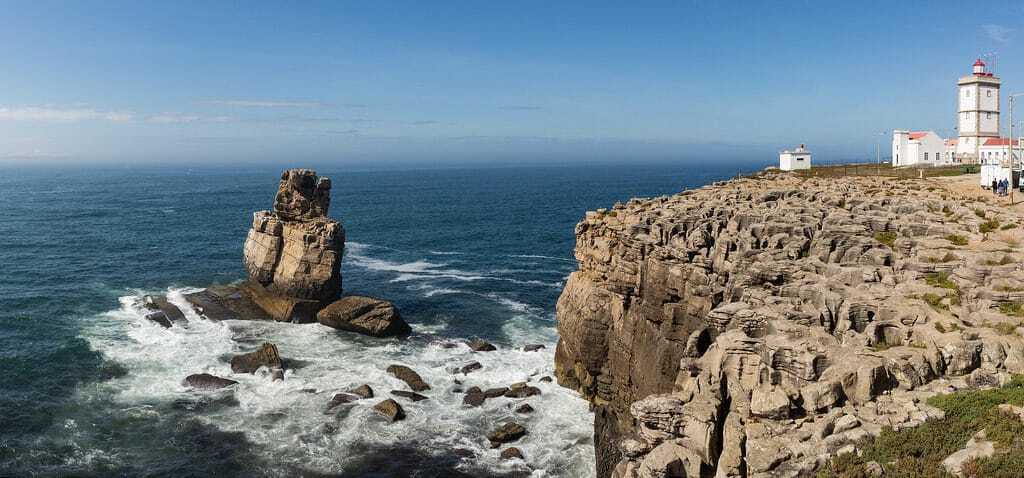The studies of Peniche stratotype state that the Iberian Peninsula in the Early Jurassic was an island and the areas that now include the cities of Coimbra, Lisbon and Peniche were sea, and there was nothing but marine environment. An history registered in the rocks dating back to the beginning of the Jurassic (200 million years ago) and to the more recent life in the blue planet.
Continental zones were already inhabited by dinosaurs and the Iberian Peninsula was located near the northern area of the american continent. It is the biggest rock register of that period in Portugal, related to a marine era that began 190 million years ago, before the formation of the Atlantic Ocean.
Places of geological interest of the Peniche peninsula:
1.
Papôa
In the north coast of Peniche lies a small limestone peninsula and a volcanic gap known as the islet of Papôa. This rock formation presents a carsic model and it is a very sought-after fishing spot, offering nice views over the sea. The islet of Papôa sets the beginning of Baleal beach. It is a haven for surfers when the wind blows from the south-east and also an excellent spot for birdwatching. Peniche is the best place for watching migrating birds from Europe, such as: the European shag (Phalacrocorax aristotelis), the laughing gull (Larus atricilla) or the Roseate tern (Sterna dougallii).
2.
Praia do Portinho da Areia do Norte
The beach Praia do Portinho da Areia do Norte is a privileged spot for contemplating the Natural Reserve of Berlengas from afar. The small sandy area is located in an inlet and on the north you will find the Papôa peninsula, famous for its huge waves. The victims of the San Pedro de Alcântara ship wreck were buried here on February 2nd 1786.
3.
Ponta do Trovão and Praia do Abalo
Ponta do Trovão is situated in the north zone of the Peniche peninsula, emerging over a rocky edge, surrounded by small U-shaped inlet that forms the beach Praia do Abalo. According to the classification of Ponta do Trovão by International Union on Geological Sciences “Ponta do Trovão shows a succession of carbonate sedimentary rocks of the Jurassic Age that consists of a continuous unequal testimony of 20 million years of Portuguese geological history. It is without any doubt Portugal’s greatest rock register of that era, during the marine phase that began 190 million years ago, before the formation of the Atlantic ocean”.
4.
From Remédios to Cape Carvoeiro
From Remédios belvedere to Cape Carvoeiro lies an extremely beautiful carsic landscape formed by rocks of several shapes, where tourists often stop over. This portion of coast of the Peniche peninsula has a very rich natural heritage, especially in terms of scenery and geomorphology.
5.
Gruta da Furninha
Furninha cave, located in the south coast of Peniche peninsula, is a natural cavity occupied during the pre-historic period and the most important pre-historic site of the county. Located nowadays by the sea, this cave was occupied between the Middle Palaeolithic and the Late Calcolithic. In 1880 it was found by the researcher Joaquim Nery Delgado. Used as a shelter and a necropolis, this pre-historic site was the source of a vast archaeological heritage, such as: bones of several hominids, namely Homo Sapiens (Neanderthal Man); vestiges of fauna of the quaternary period (fish and mammals); lytic utensils (hand axes, arrowheads, polished stone axes); bone utensils and several Neolithic ceramics (the famous suspension vases of Gruta da Furninha). This archaeological heritage is spread through several city museums, such as Peniche Municipal Museum.







